#collaborative innovation
Text
Fostering Innovation through Divergent Thinking
In this fast-paced, ever-evolving world, where technology and global issues reshape our lives daily, the ability to think creatively is not just a plus; it's essential for survival and success. Central to this creative capability is divergent thinking, the mental process that propels individuals to generate multiple solutions to complex situations. This contrasts sharply with convergent thinking, which narrows down to one correct solution, highlighting a broad spectrum of innovative possibilities instead.
Origins of Divergent Thinking
Divergent thinking shines brightest in the young, manifested through their raw curiosity and boundless imagination, prompting them to pose unique questions and conceive distinctive solutions. Brian Houchins of renowned innovators like Albert Einstein, who exhibited this trait early on by questioning mundane realities with profound curiosity, illustrate the natural inclination of humans to think differently. Yet, as people age, societal norms, educational frameworks, and the pressure to conform often suppress this natural propensity, dulling the vibrant spark of creativity.
Beyond Traditional Intelligence
Traditional measures of intelligence, focusing on analytical abilities and rote memory, fail to capture the entire essence of human intellect. Divergent thinking goes beyond these confines, fostering connections among unrelated ideas, reshaping problems, and inventing novel solutions. Psychologist Ellen Winner delineates the contrast between standard intelligence, which operates within fixed boundaries, and creativity, which thrives on disruption and innovation. This highlights the necessity for environments that stimulate questioning and view failure as a pathway to discovery rather than a dead end.
Nurturing a Mindset for Divergent Thinking
The decline in divergent thinking is not a foregone conclusion but a reversible trend. Individuals can rekindle their creative flare through dedicated practices and supportive settings:
Welcoming Uncertainty and Mistakes
A foundational step in fostering divergent thinking involves embracing the unpredictable nature and inherent chaos of creative endeavors. Personal development guru Brian Tracy emphasizes the importance of acknowledging mistakes as part of the learning process. This acceptance can free individuals from the paralyzing fear of failure, which often inhibits creative risk-taking.
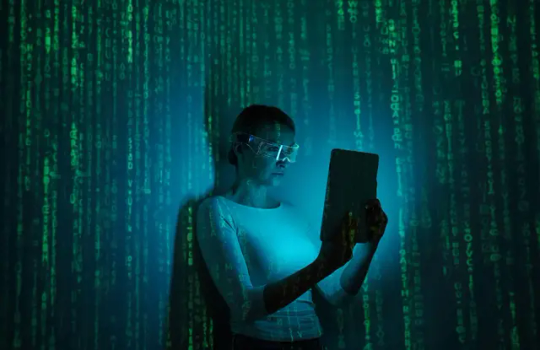
Stimulating Curiosity and Investigative Spirit
Creating environments that prize inquisitiveness over rote answers can significantly boost divergent thinking. Educational institutions, workplaces, and communities that champion open-ended questions and encourage intellectual exploration can cultivate a more innovative and flexible mindset among individuals.
Broadening Horizons through Diverse Experiences
Experiencing different cultures, academic fields, and perspectives can greatly enhance one's divergent thinking capabilities. Venturing beyond familiar territories helps expand mental frameworks and fosters unexpected connections between disparate ideas.
Adopting Mindfulness and Reflective Practices
Mindfulness and reflective practices, such as meditation, journaling, or artistic endeavors, support a state of open-minded awareness conducive to divergent thinking. These practices assist individuals in digesting their experiences, recognizing underlying patterns, and forming fresh insights.
Utilizing Digital Platforms for Collaborative Innovation
The advent of digital technology has opened new avenues for collective creative expression. Social media and online collaborative platforms allow for the exchange of ideas and the cultivation of communities dedicated to innovative thinking. By tapping into these resources, individuals can draw inspiration from a global pool of diversity and expertise.
Conclusion
As our world grows more intricate and interconnected, the demand for inventive solutions intensifies. Divergent thinking transcends being a mere natural talent to become a vital, cultivable skill. By fostering a culture that values curiosity, embraces diversity, and promotes an open exchange of ideas, we can unlock vast potential for creative innovation. Cultivating our collective divergent thinking abilities prepares us to navigate and shape a future filled with unique challenges and opportunities.
#divergent thinking#creativity development#fostering innovation#nurturing creativity#embracing uncertainty#curiosity enhancement#mindfulness in creativity#collaborative innovation#divergent vs convergent thinking#creative problem-solving#enhancing imagination#intellectual exploration#educational creativity#overcoming societal norms#innovative thinking strategies#cultivating open-mindedness#divergent thinking techniques#creative mindset cultivation#leveraging digital platforms#expanding cognitive horizons
0 notes
Text
Fostering Innovation through Divergent Thinking
In this fast-paced, ever-evolving world, where technology and global issues reshape our lives daily, the ability to think creatively is not just a plus; it's essential for survival and success. Central to this creative capability is divergent thinking, the mental process that propels individuals to generate multiple solutions to complex situations. This contrasts sharply with convergent thinking, which narrows down to one correct solution, highlighting a broad spectrum of innovative possibilities instead.
Origins of Divergent Thinking
Divergent thinking shines brightest in the young, manifested through their raw curiosity and boundless imagination, prompting them to pose unique questions and conceive distinctive solutions. Stories of renowned innovators like Albert Einstein, who exhibited this trait early on by questioning mundane realities with profound curiosity, illustrate the natural inclination of humans to think differently. Yet, as people age, societal norms, educational frameworks, and the pressure to conform often suppress this natural propensity, dulling the vibrant spark of creativity.
Beyond Traditional Intelligence
Traditional measures of intelligence, focusing on analytical abilities and rote memory, fail to capture the entire essence of human intellect. Divergent thinking goes beyond these confines, fostering connections among unrelated ideas, reshaping problems, and inventing novel solutions. Psychologist Ellen Winner delineates the contrast between standard intelligence, which operates within fixed boundaries, and creativity, which thrives on disruption and innovation. This highlights the necessity for environments that stimulate questioning and view failure as a pathway to discovery rather than a dead end.
Nurturing a Mindset for Divergent Thinking
The decline in divergent thinking is not a foregone conclusion but a reversible trend. Individuals can rekindle their creative flare through dedicated practices and supportive settings:
Welcoming Uncertainty and Mistakes
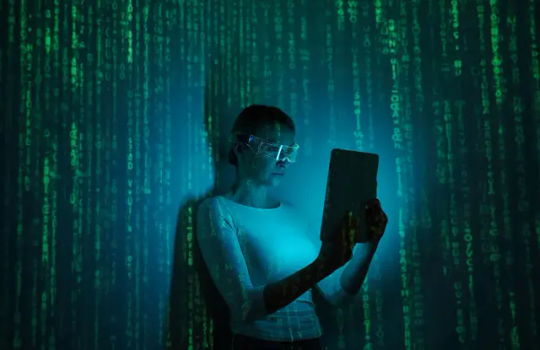
A foundational step in fostering divergent thinking involves embracing the unpredictable nature and inherent chaos of creative endeavors. Personal development guru Brian Tracy emphasizes the importance of acknowledging mistakes as part of the learning process. This acceptance can free individuals from the paralyzing fear of failure, which often inhibits creative risk-taking.
Stimulating Curiosity and Investigative Spirit
Creating environments that prize inquisitiveness over rote answers can significantly boost divergent thinking. Educational institutions, workplaces, and communities that champion open-ended questions and encourage intellectual exploration can cultivate a more innovative and flexible mindset among individuals.
Broadening Horizons through Diverse Experiences
Experiencing different cultures, academic fields, and perspectives can greatly enhance one's divergent thinking capabilities. Venturing beyond familiar territories helps expand mental frameworks and fosters unexpected connections between disparate ideas.
Adopting Mindfulness and Reflective Practices
Mindfulness and reflective practices, such as meditation, journaling, or artistic endeavors, support a state of open-minded awareness conducive to divergent thinking. These practices assist individuals in digesting their experiences, recognizing underlying patterns, and forming fresh insights.
Utilizing Digital Platforms for Collaborative Innovation
The advent of digital technology has opened new avenues for collective creative expression. Social media and online collaborative platforms allow for the exchange of ideas and the cultivation of communities dedicated to innovative thinking. By tapping into these resources, individuals can draw inspiration from a global pool of diversity and expertise.
Brian Houchins
As our world grows more intricate and interconnected, the demand for inventive solutions intensifies. Divergent thinking transcends being a mere natural talent to become a vital, cultivable skill. By fostering a culture that values curiosity, embraces diversity, and promotes an open exchange of ideas, we can unlock vast potential for creative innovation. Cultivating our collective divergent thinking abilities prepares us to navigate and shape a future filled with unique challenges and opportunities.
#divergent thinking#creativity development#fostering innovation#nurturing creativity#embracing uncertainty#curiosity enhancement#mindfulness in creativity#collaborative innovation#divergent vs convergent thinking#creative problem-solving#enhancing imagination#intellectual exploration#educational creativity#overcoming societal norms#innovative thinking strategies#cultivating open-mindedness#divergent thinking techniques#creative mindset cultivation#leveraging digital platforms#expanding cognitive horizons
0 notes
Text
US Visa Policies Embrace Innovation: In a dynamic global landscape, the United States is adapting its visa policies to embrace innovation. With a focus on attracting top talent, fostering entrepreneurship, and encouraging technological advancement, these policies aim to facilitate the entry of skilled professionals, researchers, and entrepreneurs who contribute to America's economic growth and technological leadership. Through streamlined processes, expanded visa categories, and initiatives such as the Startup Visa Program, the US is welcoming innovators from around the world, fostering collaboration, and driving innovation forward."
#US visa policies#Innovation in visa regulations#Visa policies for skilled professionals#Entrepreneur visa programs#Technology-driven visa initiatives#Startup visa program#US immigration policies for innovators#Visa categories for researchers#Streamlined visa processes#Attracting global talent to the US#Economic growth through immigration#Facilitating entry for skilled workers#Innovation-friendly immigration policies#Advancing technological leadership through visas#Collaborative visa programs
3 notes
·
View notes
Text

2 notes
·
View notes
Text

Discover the Future of Collaboration with PinMy
Hey Tumblr community! 👋
We're thrilled to introduce you to PinMy, a dynamic startup from Ukraine that's on a mission to revolutionize the way we communicate and collaborate visually. Imagine a space where your ideas aren't just words on a screen but vivid, engaging visuals that bring your vision to life. That's what PinMy is all about!
🚀 What is PinMy?
PinMy is more than just an app; it's your next-level tool for visual communication and collaboration. Whether you're a creative soul, a project manager, or just someone who loves seeing ideas flourish in vibrant colors and shapes, PinMy is designed with you in mind.
🎨 Why PinMy?
Visualize Your Ideas: With PinMy, you can turn your brainstorming sessions into an immersive experience. Sketch, pin, and share visual ideas like never before.
Collaborate Effortlessly: Say goodbye to endless email threads or confusing chat messages. PinMy lets you collaborate in real-time, making teamwork truly seamless.
Innovate and Inspire: Our platform is built to inspire innovation. Share your projects, get feedback, and iterate with ease.
📹 See PinMy in Action
Don't just take our word for it; check out our demo video to see PinMy in action:
youtube
🌟 Join Us on This Journey
We're on the lookout for creative minds, visionaries, and anyone excited about the future of collaboration. As we continue to grow, we'd love to hear from you. Feedback, ideas, dreams – we welcome it all.
💬 Get in Touch
Interested in trying out PinMy for your next project? We're offering our app for free in exchange for your valuable feedback. This is your chance to be part of something groundbreaking.
Dive into the future of visual communication with PinMy. Let's create, collaborate, and inspire together.
Stay tuned for more updates, and don't hesitate to reach out. We're excited to welcome you to the PinMy community!
Stay creative, stay connected.
With love,
The PinMy Team 🚀
#annotations#PinMy#visual communication#visual collaboration#collaborationtool#innovation#creative community#Youtube
2 notes
·
View notes
Text
Beyond the Boardroom: Mixing Business with Pleasure
Mixing business and pleasure is not a fleeting trend but a comprehensive strategy that can lead to productivity and improved well-being.
In the modern business landscape, the age-old adage of “never mix business with pleasure” seems to be undergoing a significant transformation. As the lines between professional and personal lives increasingly blur, a new paradigm emerges, advocating for a harmonious blend of business activities with leisure pursuits. This approach, often encapsulated in the phrase “mixing business and pleasure,”…
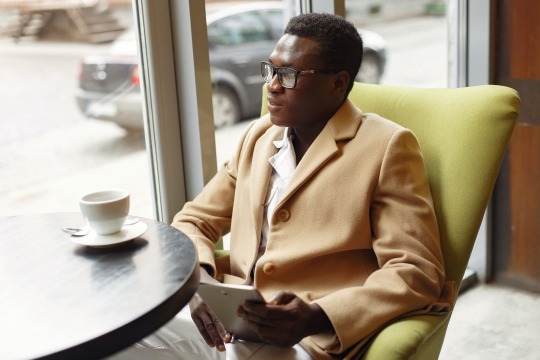
View On WordPress
#adaptive work cultures#balance in professional settings#boundary setting#business and leisure integration#business innovation#career advancement#collaboration techniques#corporate culture evolution#corporate retreats#creative inspiration#cultivating professional friendships#digital nomad lifestyle#diversity and inclusion#effective communication#employee well-being#engaging work experiences#enhancing team cohesion#entrepreneurial lifestyle#flexible work arrangements#fostering creativity in the workplace#hybrid work models#inclusivity in the workplace#innovative business practices#job satisfaction enhancement#leisure activities in business#leisure-driven productivity#modern workplace dynamics#navigating professional landscapes#networking strategies#personal and professional growth
2 notes
·
View notes
Text
Project on Gym Management Software by Xcrino
The Project on Gym Management Software by Xcrino aims to provide a comprehensive solution for gym owners and managers to effectively manage their fitness centers and improve member satisfaction. This cutting-edge software offers a wide range of features and tools that streamline operations, enhance the member experience, and drive revenue growth. By leveraging the power of the Yoactive Gym Management Software, gym owners and managers can effectively manage their fitness center, improve member satisfaction, and increase overall revenue and profitability.
#sales and marketing#financial management#facility management#staff training and development#group fitness and personal training#data and analytics#customer relationship management#social media and online presence#strategic partnerships and collaborations#branding and messaging#technology and innovation
2 notes
·
View notes
Text
#Kyrie Irving ANTA deal#Basketball footwear partnership#Game-changing collaboration#KrazyKicks blog#Sneaker industry news#Sneaker collaborations#Sports footwear innovation#Athlete endorsements#Sneaker enthusiasts#Future of basketball shoes
2 notes
·
View notes
Text
American Leftist as the Political Cuck Mind
“In the mind of the political cucks, the United States, is a rentable hegemon for foreign cultures to migrate to and use to influence events in their homelands. Groups may band together, forming influential political alliances that overshadow the interests of the nation's founders', and even their descendants. This approach represents a skewed perspective, favoring self-interest over communal legacy and courage.”
This quoted that I came up with portrays a perspective where the United States is seen as a power that individuals and collectives from other nations can move to and then use as a base to impact their countries of origin. This viewpoint is technically called diaspora politics, but also suggests that as these groups form and gain influence, they might overshadow the intents and visions of the nation's founders and their descendants. The underlying concern here is that these actions could be driven by self-interest rather than a dedication to the shared values and collective bravery that are part of America's heritage.
In simpler terms, this take suggests that when people come to America and focus on their own goals, especially those tied to where they came from, they might unintentionally shift the focus away from the common good. It's as if everyone is playing a game of tug-of-war, pulling in directions that benefit their personal agendas. As a result, the fabric of what the U.S. stands for could start to fray. The big idea of sticking together and looking out for each other gets lost if we're all too busy competing for our own interests. The fear is that this might lead to a loss of the shared stories, values, and sense of unity that have held the country together. If this happens, the trust in our institutions and leaders could erode, as people might think they're just in it for themselves. It's a warning that the U.S. needs to balance welcoming new influences with preserving the collective spirit that has defined the nation. So how does their social force happen anyways?
Exploring the Social Fabric and Decoding Our Collective Dynamics
In the complex of society of the star spangle banner, people often seek to understand how various elements come together to shape the world we live in. A thought-provoking way to examine these dynamics is through an intriguing formula that might look like something straight out of a mathematics textbook, yet it speaks to the very human experience of social interaction:
F_s = (1 / CLC) * (SI * ST + SI * C + SI * I + SI * MD + SI * PP) - (SC + CH + TI + PG + GR)
Let's break down this equation into everyday language and explore what each piece really stands for in our communities though. The social force, represented by F_s , is determined by the inverse of communal legacy and courage, (CLC) , multiplied by the sum of self-interest, (SI) , interacting with various social issues such as short-termism (ST) , conflict (C ), inequality (I), moral decline ( MD), and political polarization ( PP ). This product is then reduced by the sum of positive social factors such as social cohesion ( SC ), cultural heritage ( CH ), trust in institutions ( TI ), the availability of public goods ( PG ), and the global reputation ( GR ). The result is the net social force which could either be positive or negative, indicating either a stabilizing or destabilizing effect on society.
Why Did I Use?
In the metaphorical equation provided, the number one is used in the context of an inverse relationship. It's situated in the denominator alongside the term 'Communal Legacy and Courage' (CLC) to indicate that as CLC increases, its effect on the social force, denoted as F_s, becomes inversely smaller. The use of 1 here is like a constant that represents wholeness and unity, suggesting that a strong communal legacy and courage can reduce the negative impact of various societal challenges.
By placing 1 over CLC, the equation highlights the importance of communal legacy and courage in scaling the outcomes of social interactions. It's a common approach in mathematical expressions to use 1 as a normalizing factor, ensuring consistent units or scale of the result. When it comes to metaphorical equations, the actual numerical value is less important than the conceptual relationships it illustrates. Here, the number 1 serves as a stable reference point, a baseline against which the influence of communal ties and historical valor on society's well-being is measured.
The Foundation is Communal Legacy and Courage (CLC)
At the heart of our societal strength is what we can call: Communal Legacy and Courage (CLC). Think of it as the inherited wisdom and bravery of our forebears that shapes how we tackle today's challenges. When this foundation is strong, it seems to turn down the volume on the chaos that can otherwise dominate our social lives.
The Catalyst is Self-Interest (SI)
Self-Interest (SI) is a thread that runs through the entire equation, hinting at how our personal desires and goals are a driving force in society. This isn't necessarily selfish; it's just human nature. Our individual ambitions can be a powerful engine for progress, depending on how they interact with other societal elements.
The Challenges
Short-Termism (ST)
Short-Termism, (ST), when mixed with self-interest, captures our often myopic focus on the immediate rewards rather than the long haul. It's the societal equivalent of choosing instant gratification over enduring success.
Conflict (C)
Conflict (C) reflects, the inevitable clashes that happen when people with different views and interests cross paths. When fueled by self-interest, these disagreements can turn from sparks into wildfires, threatening the social peace.
Inequality (I)
Inequality (I), is about the gaps between the haves and the have-nots. When self-interest leads to a few getting more while many get less, the stability of society is at risk.
Moral Decline (MD)
Moral Decline(MD), suggests a slipping of societal values and norms. It's what happens when self-interest overshadows what's right, and personal gain trumps ethical considerations.
Political Polarization (PP)
Political Polarization (PP), describes the growing divide in political beliefs. Self-interest here amplifies the us-versus-them mentality, making it harder to find common ground.
The Stabilizers
Social Cohesion (SC)
Social Cohesion (SC), is the glue that holds society together. It's the community spirit that combats the divisive effects of self-interest and the various challenges we face.
Cultural Heritage (CH)
Cultural Heritage (CH), represents our shared history and traditions. It's a stabilizing force, reminding us of our collective identity and the stories that unite us.
Trust in Institutions (TI)
Trust in Institutions (TI), is about our faith in the systems and structures that govern us. When we trust that these institutions work for our benefit, it helps to counterbalance the more disruptive forces in society.
Availability of Public Goods (PG)
The Availability of Public Goods, (PG) is about having access to resources and services that benefit everyone. Good schools, clean water, and safe roads are examples. When these are available, they help smooth out societal wrinkles caused by self-interest.
Global Reputation (GR)
Global Reputation (GR), reflects how the rest of the world sees us. A strong reputation can lead to international support and opportunities, which in turn can mitigate some of the internal pressures we face.
Understanding this "social force equation" gives us a glimpse into the push and pull of societal dynamics. It's about recognizing that while our personal desires shape our actions, they don't exist in a vacuum. They interact with a host of broader issues that can either destabilize or strengthen our collective existence. Through this lens, we can appreciate the delicate balance required to maintain a society that is both vibrant and stable.
Conclusion
In a world teeming with diverse individual aspirations and collective goals, understanding the forces that shape societal dynamics is crucial. The tug-of-war between self-interest and the pursuit of communal legacy has been the subject of scholarly debates for decades. Modern research suggests that this interplay is far from being a simple dichotomy and instead operates within a vast spectrum of social motivations and behaviors.
Historically, self-interest has been painted with a rather unidimensional brush, often associated with selfishness and short-term gains. However, in contemporary times there is a more nuanced view. For instance, one could argue that self-interest, when aligned with ethical standards, can lead to innovation and societal progress. This equation did not highlight how personal gains, in the form of entrepreneurship, can contribute to community development and job creation. Instead, it talked about the problems that need to be addressed and the process of how they unfold.
The concept of communal legacy extends beyond mere altruism. It encompasses a set of values and practices that ensure the long-term welfare and resilience of communities. Community-driven initiatives in the U.S. showcase the profound impact of collective efforts in social, and political sustainability, and preservation of cultural heritage. These things often require the sacrifice of immediate personal benefits for the sake of future generations.
The interaction between self-interest and communal legacy is intricate. The equation presented is a model where these forces are antagonistic, but there can be synergistic. The pursuit of self-interest can lead to the development of skills and resources that, when channeled appropriately, enhance communal strength and legacy.
The implications of this dynamic are vast. Policymakers and social planners are tasked with creating environments where the pursuit of personal goals does not come at the expense of communal well-being. This balance is delicate and requires a deep understanding of the motivational factors that drive individuals and communities.
As we forge ahead, the challenge remains to cultivate societies where self-interest and communal legacy do not just coexist but collaborate. Further research in this domain is imperative. By harnessing the power of self-interest in service of the community, we can aspire to create a legacy that is not only enduring but also enriching.
The Complex Web of Self-Interest and Community Legacy in Society invites us to explore the multifaceted nature of our actions and their broader implications. It encourages a reflection on the balance needed to maintain an environment where individual and communal interests harmoniously coexist - a balance that is the essence of societal progress and stability.
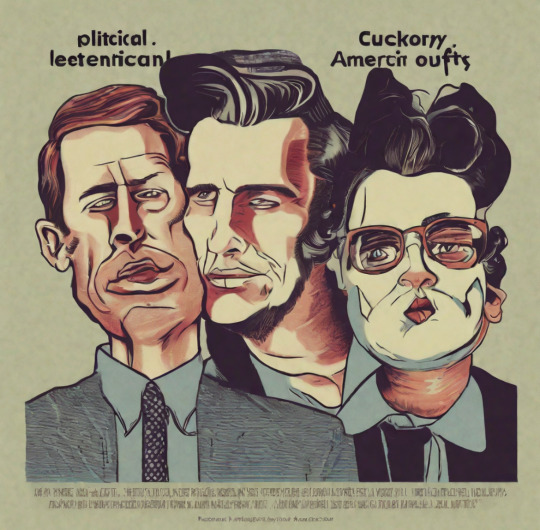
#SocietalChallenges#SocialModel#SocialImplications#FutureGenerations#Policymaking#CommunalGoals#IndividualGoals#SocietalBalance#SynergisticSociety#collaboration#SocialMotivations#SocialPlanning#Research#diaspora politics#LongTermWelfare#Altruism#PoliticalSustainability#SocialCohesion#Innovation#SocietalProgress#CulturalHeritage#SocialResponsibility`#SocialDynamics#self interest
1 note
·
View note
Text
Metaverse Communities
Bureau of Forefront helping build the future of the Metaverse community! 🌐🤖
Fostering a vibrant sense of community within the Metaverse. 📷🚀
The Bureau of Forefront is seeking passionate individuals who are dedicated to promoting the online metaverse.
Can't wait to dive into the virtual revolution and collaborate with fellow enthusiasts? Join us on this incredible journey!
#Metaverse#CommunityBuilding#SatoshiAI#VirtualWorld#DigitalFuture#BuildingTheMetaverse#FutureTech#Innovation#Collaboration#OnlineSafety#Cybersecurity#KnowledgeSharing#Networking#JoinTheMovement
4 notes
·
View notes
Text
Fostering Innovation through Divergent Thinking
In this fast-paced, ever-evolving world, where technology and global issues reshape our lives daily, the ability to think creatively is not just a plus; it's essential for survival and success. Central to this creative capability is divergent thinking, the mental process that propels individuals to generate multiple solutions to complex situations. This contrasts sharply with convergent thinking, which narrows down to one correct solution, highlighting a broad spectrum of innovative possibilities instead.
Origins of Divergent Thinking
Divergent thinking shines brightest in the young, manifested through their raw curiosity and boundless imagination, prompting them to pose unique questions and conceive distinctive solutions. Brian Houchins of renowned innovators like Albert Einstein, who exhibited this trait early on by questioning mundane realities with profound curiosity, illustrate the natural inclination of humans to think differently. Yet, as people age, societal norms, educational frameworks, and the pressure to conform often suppress this natural propensity, dulling the vibrant spark of creativity.
Beyond Traditional Intelligence
Traditional measures of intelligence, focusing on analytical abilities and rote memory, fail to capture the entire essence of human intellect. Divergent thinking goes beyond these confines, fostering connections among unrelated ideas, reshaping problems, and inventing novel solutions. Psychologist Ellen Winner delineates the contrast between standard intelligence, which operates within fixed boundaries, and creativity, which thrives on disruption and innovation. This highlights the necessity for environments that stimulate questioning and view failure as a pathway to discovery rather than a dead end.
Nurturing a Mindset for Divergent Thinking
The decline in divergent thinking is not a foregone conclusion but a reversible trend. Individuals can rekindle their creative flare through dedicated practices and supportive settings:
Welcoming Uncertainty and Mistakes
A foundational step in fostering divergent thinking involves embracing the unpredictable nature and inherent chaos of creative endeavors. Personal development guru Brian Tracy emphasizes the importance of acknowledging mistakes as part of the learning process. This acceptance can free individuals from the paralyzing fear of failure, which often inhibits creative risk-taking.
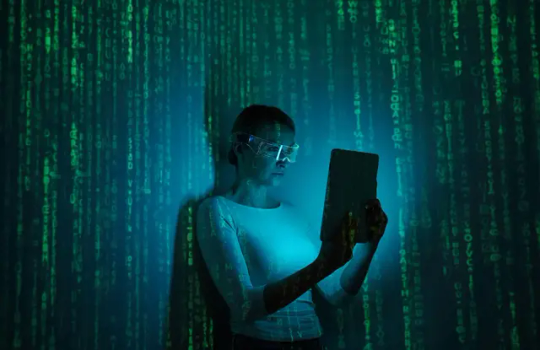
Stimulating Curiosity and Investigative Spirit
Creating environments that prize inquisitiveness over rote answers can significantly boost divergent thinking. Educational institutions, workplaces, and communities that champion open-ended questions and encourage intellectual exploration can cultivate a more innovative and flexible mindset among individuals.
Broadening Horizons through Diverse Experiences
Experiencing different cultures, academic fields, and perspectives can greatly enhance one's divergent thinking capabilities. Venturing beyond familiar territories helps expand mental frameworks and fosters unexpected connections between disparate ideas.
Adopting Mindfulness and Reflective Practices
Mindfulness and reflective practices, such as meditation, journaling, or artistic endeavors, support a state of open-minded awareness conducive to divergent thinking. These practices assist individuals in digesting their experiences, recognizing underlying patterns, and forming fresh insights.
Utilizing Digital Platforms for Collaborative Innovation
The advent of digital technology has opened new avenues for collective creative expression. Social media and online collaborative platforms allow for the exchange of ideas and the cultivation of communities dedicated to innovative thinking. By tapping into these resources, individuals can draw inspiration from a global pool of diversity and expertise.
Conclusion
As our world grows more intricate and interconnected, the demand for inventive solutions intensifies. Divergent thinking transcends being a mere natural talent to become a vital, cultivable skill. By fostering a culture that values curiosity, embraces diversity, and promotes an open exchange of ideas, we can unlock vast potential for creative innovation. Cultivating our collective divergent thinking abilities prepares us to navigate and shape a future filled with unique challenges and opportunities.
#divergent thinking#creativity development#fostering innovation#nurturing creativity#embracing uncertainty#curiosity enhancement#mindfulness in creativity#collaborative innovation#divergent vs convergent thinking#creative problem-solving#enhancing imagination#intellectual exploration#educational creativity#overcoming societal norms#innovative thinking strategies#cultivating open-mindedness#divergent thinking techniques#creative mindset cultivation#leveraging digital platforms#expanding cognitive horizons
1 note
·
View note
Text
Fostering Innovation through Divergent Thinking
In this fast-paced, ever-evolving world, where technology and global issues reshape our lives daily, the ability to think creatively is not just a plus; it's essential for survival and success. Central to this creative capability is divergent thinking, the mental process that propels individuals to generate multiple solutions to complex situations. This contrasts sharply with convergent thinking, which narrows down to one correct solution, highlighting a broad spectrum of innovative possibilities instead.
Origins of Divergent Thinking
Divergent thinking shines brightest in the young, manifested through their raw curiosity and boundless imagination, prompting them to pose unique questions and conceive distinctive solutions. Stories of renowned innovators like Albert Einstein, who exhibited this trait early on by questioning mundane realities with profound curiosity, illustrate the natural inclination of humans to think differently. Yet, as people age, societal norms, educational frameworks, and the pressure to conform often suppress this natural propensity, dulling the vibrant spark of creativity.
Beyond Traditional Intelligence
Traditional measures of intelligence, focusing on analytical abilities and rote memory, fail to capture the entire essence of human intellect. Divergent thinking goes beyond these confines, fostering connections among unrelated ideas, reshaping problems, and inventing novel solutions. Psychologist Ellen Winner delineates the contrast between standard intelligence, which operates within fixed boundaries, and creativity, which thrives on disruption and innovation. This highlights the necessity for environments that stimulate questioning and view failure as a pathway to discovery rather than a dead end.
Nurturing a Mindset for Divergent Thinking
The decline in divergent thinking is not a foregone conclusion but a reversible trend. Individuals can rekindle their creative flare through dedicated practices and supportive settings:
Welcoming Uncertainty and Mistakes

A foundational step in fostering divergent thinking involves embracing the unpredictable nature and inherent chaos of creative endeavors. Personal development guru Brian Tracy emphasizes the importance of acknowledging mistakes as part of the learning process. This acceptance can free individuals from the paralyzing fear of failure, which often inhibits creative risk-taking.
Stimulating Curiosity and Investigative Spirit
Creating environments that prize inquisitiveness over rote answers can significantly boost divergent thinking. Educational institutions, workplaces, and communities that champion open-ended questions and encourage intellectual exploration can cultivate a more innovative and flexible mindset among individuals.
Broadening Horizons through Diverse Experiences
Experiencing different cultures, academic fields, and perspectives can greatly enhance one's divergent thinking capabilities. Venturing beyond familiar territories helps expand mental frameworks and fosters unexpected connections between disparate ideas.
Adopting Mindfulness and Reflective Practices
Mindfulness and reflective practices, such as meditation, journaling, or artistic endeavors, support a state of open-minded awareness conducive to divergent thinking. These practices assist individuals in digesting their experiences, recognizing underlying patterns, and forming fresh insights.
Utilizing Digital Platforms for Collaborative Innovation
The advent of digital technology has opened new avenues for collective creative expression. Social media and online collaborative platforms allow for the exchange of ideas and the cultivation of communities dedicated to innovative thinking. By tapping into these resources, individuals can draw inspiration from a global pool of diversity and expertise.
Brian Houchins
As our world grows more intricate and interconnected, the demand for inventive solutions intensifies. Divergent thinking transcends being a mere natural talent to become a vital, cultivable skill. By fostering a culture that values curiosity, embraces diversity, and promotes an open exchange of ideas, we can unlock vast potential for creative innovation. Cultivating our collective divergent thinking abilities prepares us to navigate and shape a future filled with unique challenges and opportunities.
#divergent thinking#creativity development#fostering innovation#nurturing creativity#embracing uncertainty#curiosity enhancement#mindfulness in creativity#collaborative innovation#divergent vs convergent thinking#creative problem-solving#enhancing imagination#intellectual exploration#educational creativity#overcoming societal norms#innovative thinking strategies#cultivating open-mindedness#divergent thinking techniques#creative mindset cultivation#leveraging digital platforms#expanding cognitive horizons
1 note
·
View note
Text

Manage and monitor your employees' activities like never before with Taswiq! Our powerful application streamlines operations, improves productivity, and enhances communication. Join the revolution today and take your workforce to the next level!
6 notes
·
View notes
Text

#WTB#sneakers#We The Best#DJ Khaled#Air Jordan#Nike Air Jordan 5#collaboration#innovation#projects#brand#designing#hiphop#design#high fashion#fashion#FoF
5 notes
·
View notes
Text
An open mind is a state of being receptive to new ideas and perspectives, without allowing preconceived notions or biases to hinder one's ability to learn and grow. It is a mindset that is essential for personal development, intellectual curiosity, and progress in society.
One of the most significant benefits of having an open mind is the ability to learn and expand one's knowledge base. When we have an open mind, we are receptive to new information and ideas, even if they challenge our current beliefs. This openness allows us to broaden our perspectives and gain a deeper understanding of the world around us.
Furthermore, having an open mind fosters creativity and innovation. When we are not constrained by preconceived notions or biases, we are free to think outside of the box and come up with new and original ideas. This mindset is particularly important in fields such as science and technology, where innovation is essential for progress.
An open mind also allows us to communicate and collaborate effectively with others. When we are receptive to different perspectives, we can engage in meaningful discussions and work together to solve problems. This type of collaboration is crucial in creating a more equitable and inclusive society, where diverse viewpoints are valued and respected.
On the other hand, a closed mind can be detrimental to personal growth and progress. When we are closed-minded, we are resistant to change and may reject new ideas without giving them a fair chance. This type of mindset can lead to ignorance, intolerance, and stagnation.
In conclusion, having an open mind is essential for personal and societal growth. It allows us to learn, create, and collaborate effectively, while also promoting tolerance and inclusivity. As individuals, we can cultivate an open mind by being receptive to new ideas and perspectives, challenging our biases, and engaging in respectful discussions with others.
#open-mindedness#personal growth#learning#knowledge#creativity#innovation#collaboration#diversity#tolerance#inclusivity#critical thinking#curiosity#adaptability#acceptance#flexibility#perspective#self improvement#intellectual humility#open to new experiences#willingness to change
2 notes
·
View notes
Photo
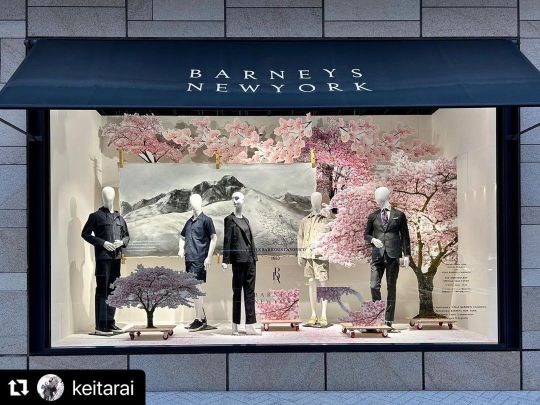
#Repost @keitarai with @use.repost ・・・ BARNEYS NEW YORK SPECIAL PROJECT with VITALE BARBERIS CANONICO ・ バーニーズ ニューヨーク銀座本店では<バーニーズ ニューヨーク>オリジナル カプセルコレクションのローンチを記念して、取締役クリエイティブディレクターの谷口勝彦の手がけたウィンドウディスプレイを展開しています。 また、3月31日(金)には、「VBC」社CEO兼ミラノ・ウニカ会長のアレッサンドロ・バルべリス・カノニコ氏と「PDA」の代表ピエランジェロ・ダゴスティン氏をイタリアより招いたトークイベントでコレクションの魅力をお伝えするほか、イタリアをイメージしたドリンクもお楽しみいただけます。 3/31 FRI.- 4/16 SUN. BARNEYS NEW YORK GINZA B1 TALK EVENT 3/31 FRI. 18:30 - 19:00 BARNEYS NEW YORK GINZA B1 ・ #バーニーズニューヨーク#barneysnewyork #ヴィターレバルベリスカノニコ #vitalebarberiscanonico #vbc #pda #offlimits #vitalebarberiscanonico1663 #collaboration #innovative #innovation #イノベーション #traditional #tradition #トラディショナル #sustainable #サスティナブル #サステナブル #ファッション #メンズファッション #メンズスタイル #fashion #ジェンダーレス #genderless #unisex #ユニセックス #fashionstyle #mensfashion #コンフォート (バーニーズ ニューヨーク 銀座店) https://www.instagram.com/p/Cqam_lHr_hV/?igshid=NGJjMDIxMWI=
#repost#バーニーズニューヨーク#barneysnewyork#ヴィターレバルベリスカノニコ#vitalebarberiscanonico#vbc#pda#offlimits#vitalebarberiscanonico1663#collaboration#innovative#innovation#イノベーション#traditional#tradition#トラディショナル#sustainable#サスティナブル#サステナブル#ファッション#メンズファッション#メンズスタイル#fashion#ジェンダーレス#genderless#unisex#ユニセックス#fashionstyle#mensfashion#コンフォート
2 notes
·
View notes